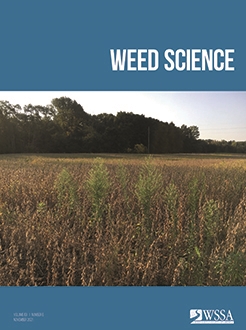A goosegrass [Eleusine indica (L.) Gaertn.] population uncontrolled by paraquat (R) in a vegetable production field in St. Clair County, AL, was collected in summer 2019. Research was conducted to assess the level of resistance of the suspected resistant population compared with three populations with no suspected paraquat resistance (S1, S2, and S3). Visual injury at all rating dates and biomass reduction at 28 d after treatment (DAT) of S populations occurred exponentially to increasing paraquat rates. S biotypes were injured more than R at 3 DAT, with biomass recovery at 28 DAT only occurring at rates <0.28 kg ha–1. Plant death or biomass reduction did not occur for any rate at any date for R. Paraquat rates that induced 50% or 90% injury or reduced biomass 50% or 90% compared with the non-treated (I50 or I90, respectively) ranged from 10 to 124 times higher I50 for R compared with S and 54 to 116 times higher I90 for R compared with S biotypes. These data confirm a paraquat-resistant E. indica biotype in Alabama, providing additional germplasm for study of resistance to photosystem I electron-diverting (PSI-ED) resistance mechanisms.
How to translate text using browser tools
1 July 2021
Identification of a Paraquat-Resistant Goosegrass (Eleusine indica) Population from a Central Alabama Vegetable Production Field
J. Scott McElroy,
James R. Harris,
Andrew Price,
Alex Harkess,
Xiao Li
ACCESS THE FULL ARTICLE

Weed Science
Vol. 69 • No. 6
November 2021
Vol. 69 • No. 6
November 2021
Herbicide resistance
oxidative stress
photosystem I





